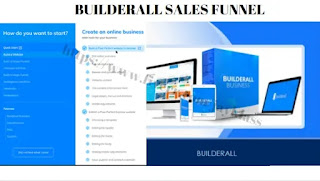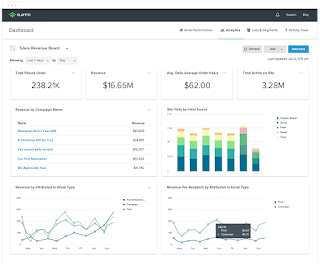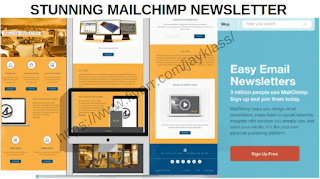getting organic traffic
Guide to Marketing Your Website and Increasing Traffic

Creating a website and filling it to the brim with outstanding content is an excellent start. If nobody even knows your site exists, however, they won’t be able to visit it. The fact is that unless you make people aware of your site’s existence (and why they should care), it will remain in obscurity.
To drive traffic to your site, you’ll need to market it. Fortunately, you have a wealth of options at your disposal, whether that’s paid promotions or building momentum organically. As long as you understand your site’s target audience and have a little patience, you can attract plenty of views.
In this article, we’ll discuss the importance of web traffic, introduce the basics of marketing your website, and help you specify a target audience. Then we’ll show you several ways you can market your website to get that traffic trickling in. Let’s get to it!
Why It’s Vital to Drive More Traffic to Your Website
Web traffic is a pretty simple concept. In short, this term refers to the number of visitors your site gets on a regular basis. High-traffic sites have more page views per day or month than low-traffic sites.
It’s probably no grand revelation to you that traffic is important to websites. Naturally, every site owner wants more people to visit, whether the goal is to generate more income or simply share the content they’ve created with the broadest possible audience.
A common reason for wanting visitors to visit your site is to increase conversions. A conversion refers to an action that you want your users to take, like making a purchase. When somebody buys something on your site, for example, they’ve converted from being a regular user into a customer.
However, conversions can be many other things as well, such as signing up for a newsletter, creating an account, or completing a form. Either way, to improve your conversions, you’ll naturally want to increase the traffic on your site.
However, this isn’t just a numbers game. In fact, while traffic itself is essential, it’s just as vital that it’s good traffic. This generally refers to visitors who stay a while, interact with your content, return multiple times, and ultimately convert. Having 500 visitors who stick around is usually better than having 5,000 visitors who leave quickly, never to return.
So how do you get the traffic you want? There are two main methods: paid traffic and organic traffic. We’ll look closer at each of them later in this article, but first, we’re going to discuss the importance of marketing in general.
Why Marketing Your Site Leads to Increased Traffic
One of the most pressing concerns for any website owner is how to help people actually find your site. This can be a daunting task, especially considering that there are literally billions of websites on the internet. Making yours visible in that crowd can be challenging.
This is where marketing your site becomes key. By creating and deploying a strong marketing strategy, you can increase visibility and awareness of your site, which is naturally the first step towards encouraging people to visit it.
Marketing can refer to any work you do that gets your site mentioned or seen elsewhere online. This could be through paid advertisements, promotions, or getting your content shared on other sites or social media platforms. Either way, it’s all about making people conscious that your site exists and communicating why they’d want to visit it in the first place.
One common technique is known as inbound marketing. This type of marketing focuses on ‘pulling’ people to your site by providing something of value. This could be a blog, video content, online courses, giveaways, and so on. The term itself was popularized by HubSpot, which describes its benefits like this:
“By creating content designed to address the problems and needs of your ideal customers, you attract qualified prospects and build trust and credibility for your business.”
The key point here is that you need to create valuable, high-quality content, which is no small feat. However, the benefits of doing this are many. For example, a relevant and well-written company blog can help you build backlinks, drive traffic, and establish your brand as an authority in your field — all at the same time.
How to Identify Your Target Audience
The most crucial aspect of effective marketing and driving the right kind of traffic is knowing whom you’re marketing to. Simply put: it’s impossible to get everyone to your site, so you’ll need to focus on those who will benefit the most from what you’re offering.
To do this, you’ll need to consider and identify your target audience — the people you want to market your site towards. While this group could be quite general, based on characteristics such as their age, gender, and location, it could also be very specific. For example, your target audience could have a particular niche interest, or work in a very specialized industry.
We’ve actually discussed how to find a target market for your business previously, so we’re not going to repeat ourselves too much here. In a nutshell, it’s vital that you conduct research and consider your competition to determine both the demographics of your potential audience and to see if there’s a segment of that audience that’s not being catered to yet.
We also recommend that you create a customer profile, which is a complete picture of your theoretical ideal customer. This provides you with a greater understanding of your target audience, as well as how best to communicate with them.
6 Ways to Drive Organic Traffic to Your Site
Now that we’ve covered the basics, let’s look at the practical aspects of marketing your website. To do that, we’ll introduce some of the best ways you can start to drive traffic to your site.
These methods all focus on how to encourage more organic traffic, which is visitors who make their way to your site naturally (via search engines, links from other sites, and so on). Later, we’ll also touch on how to create paid traffic, which is precisely what it sounds like. Let’s get to work!
1. Perform Search Engine Optimization (SEO)
This first point shouldn’t be surprising if you’re a regular reader of our blog. We’ve covered the basics of Search Engine Optimization (SEO) before, and also discussed several ways you can improve SEO on your WordPress and shopify site.
In short, SEO refers to a series of practices for optimizing your site and content to make it more likely to rank well in search results on sites like Google. The earlier your pages appear, the more traffic you’ll typically see. For example, the site ranked No. 1 gets an average of 32.5 percent of the traffic for a particular search term, while the site ranked No. 10 only gets 2.4 percent — and sites that don’t make it to the first page of results do even worse.
When it comes to optimizing your website, there are plenty of SEO tools to help you out.
For example, you can use SEMrush to perform keyword research, which will show you what terms people are using to find your site. You can also use it to find related keywords, which you can work naturally into your content. Another plus? You can easily research your competitors’ top-ranking terms. To give SEMrush a try now, type a website URL into the box below.
You can also pick up a WordPress plugin like Yoast SEO or The SEO Framework. These will guide you when creating content, to ensure that it’s optimized for search engines and follows all of Google’s SEO standards. While the requirements can seem overwhelming at a glance, you’ll soon assimilate these guidelines and be able to optimize your content quickly.
2. Create a Social Media Presence
In recent years, social media has become one of the most crucial factors in generating organic traffic. When you consider that there are over 2.5 billion social media users in the world, the reasons why should be obvious.
As such, leveraging social media to bring people to your site is key. When it comes to organic traffic, the most significant consideration is that you pick the right platforms to use, and then create a presence that appeals to your target audience.
Fortunately, there are plenty of ways to do this. You can:
- Use a scheduling tool. Social media can take up a lot of time if you do everything manually. Fortunately, there are several tools you can use to schedule and manage your posts efficiently, such as Hootsuite and Buffer.
- Create engaging and visually appealing content. If people are going to interact with and share your posts, they need to be well-written, look good, and have a unique voice. For example, if you’re using photos in your posts, you should make sure you know how to edit them to look their best.
- Don’t be afraid to use hashtags. Hashtags are a significant part of making sure your posts are discoverable by people who may be interested in them. Use hashtags that are popular but also directly relate to your site for the best results.
- Consider your brand’s voice. It’s essential to maintain a consistent voice in all your posts, but also to find one that appeals to your target market. Is your brand casual or professional? Serious or cheeky?
Finally, don’t forget to engage with others as well. Social media is not a one-way street, so be sure to comment on, like, and share posts from other users. This will make your social media presence more personal while providing additional value and reasons for your audience to follow you.
3. Start a Blog
Blogs aren’t just for recipes, general observations, and cat photos. In fact, a blog can be a powerful tool to drive more traffic to your site. The reason why harkens back to what we said earlier about providing value to your users. Running a blog is an excellent way to post content that others will find both helpful and worth sharing with others.
Best of all, getting started is very easy. You can get a blog up and running in minutes and then it’s just a matter of creating your content. Of course, writing blog posts people will want to read isn’t necessarily simple.
While we can’t tell you exactly what to write, we do have some resources that will help:
- If you follow our expert blogging tips, it should get a lot easier to start creating content.
- We’ve also created a blogging checklist with some tasks you should undertake before you publish your posts.
- Last, our tips on optimizing your blog’s structure will help you when it comes to planning out how your blog should be set up.
Once your posts are live, it’s time to make people aware that they exist. That’s when it’s time to promote your posts, especially on social media. This will be much easier if you’ve already created a social media marketing strategy, as discussed above.
The most crucial factor here is that your content is of high quality and is actually worth reading. No amount of optimization can cover for subpar content, so this should always be your number-one priority.
4. Produce Branded Video Content
You can probably guess that Google is the world’s largest search engine, but do you know which one comes in at No. 2? The answer is YouTube. Considering that the site has over a billion active monthly users, who collectively watch one billion hours of video every day, it offers a lot of opportunities for raising awareness of your site.
By creating branded video content, you can present your site to a worldwide audience through a medium they’re familiar with and primed to engage on. What form your videos take depends entirely on your site and ultimate goal.
For example, if you run an eCommerce website, you could create videos to explain your products or services. Conversely, if you manage a review site, you can create video reviews to supplement your written ones. There are plenty of possibilities, and the good news is that getting started is easier now than ever.
Naturally, there are plenty of practical considerations before you can start. For instance, you will at the very least require a camera and some form of editing tool. However, if you own a smartphone you already have both at your disposal. Today, consumer-grade cameras and editing software are more than enough to create quality, engaging videos.
The most vital aspect is to keep your branding consistent and prominent. It should be obvious that the videos are an extension of your site, and that people can find out more information by visiting you there as well. To do this, include links in your video descriptions and feature your site’s URL at key points in your videos. This will help drive interested viewers to your pages.
5. Create an Email List
As we covered earlier, one of the tenets of good traffic is that it doesn’t just visit once. You want to make sure people have reason to come back to your site again and again. While creating consistently strong content is a big part of that, another method is to use email in your marketing efforts.
In fact, email marketing is even more effective at converting customers than social media. By collecting the email addresses of your visitors, you can contact them whenever you have something new on your site. For example, you could send out an email whenever you have a new blog post, or a regular roundup of the content you’ve posted in a certain timeframe. This will encourage your audience to return to your site regularly, and also helps build a sense of loyalty and commitment to your brand.
To get started, you’ll need to choose an email marketing application. There are plenty on offer, such as MailChimp and GetResponse, both of which will help you create segmented email lists and write compelling email campaigns. Next, you’ll want to add an opt-in form to your site, which most applications will let you do by simply pasting some code onto a page.
Finally, you can write a powerful Call To Action (CTA) that encourages visitors to submit their email addresses. Creating CTAs is an art form in itself, but the key is making the benefit of signing up obvious to the user. Clearly state what you’ll provide them with and why it benefits them, and they’ll be all the more likely to sign up.
6. Build a Public Relations (PR) Strategy
Last but not least, let’s discuss the benefits of a Public Relations (PR) strategy. Essentially, PR consists of creating relationships with various media outlets, in order to get your site and brand mentioned on their channels. This can be a hugely important factor in driving quality traffic, as they’ll be directed from a trusted, authoritative source.
Developing a PR strategy can be a tricky proposition, so you’ll need to prepare accordingly. Everything we’ve covered so far can help you make some headway. For example, you can reach out to publications to see if they’d be willing to feature your blog posts or videos or make connections via your social media channels.
However, how you go about promoting your site ultimately comes down to its purpose and end goal. Take your target audience into consideration, consider what outlets they follow, and narrow down the ones that are suitable for your brand. In addition, be persistent and friendly, and make sure your site is offering high-quality content, and you should be able to build lasting relationships with people in your industry.
How to Use Paid Traffic to Grow Your Site
Organic traffic is vital, but it’s not the only way to bring in more visitors to your site. As you might expect, paid traffic refers to any visits that are generated through sources you pay for. This can include advertisements, sponsored content, professional partnerships, and so on.
One prominent example is Pay-Per-Click (PPC) advertising. This is a type of ad that appears alongside Google search results for terms that are relevant to your site. As the name suggests, every time a user clicks on one of these ads to visit your site, you’re charged a small fee.
Since the subject of how to get started with paid traffic is vast and complex, we’ll have to return to it another day. However, let’s quickly run through some of the most common ways to generate paid traffic:
- Ads and banners. These are the ads you often see on the tops and sides of web pages. They can be highly visible, although they are commonly interfered with by ad blockers.
- Sponsored content. This is sometimes known as advertorials and refers to articles and other posts that look like standard content but are actually paid marketing.
- Paid search results. Services like Bing Ads and Google AdWords can help your ads appear above the search results for specific keywords.
- Social media ads. These are sponsored posts that appear alongside the regular content in feeds and before videos.
- Influencer marketing. This refers to when an influencer in a particular field markets your product or brand in their content.
It’s vital to note that paid traffic is just as legitimate as organic traffic. In fact, most sites will rely on a combination of both to get new visitors at a regular pace. No matter what your budget and purpose are, you should now have a much clearer idea of how to market your website to get that all-important traffic rolling in!
Traffic Jam
Getting eyes on your site is arguably the single most important reason to have one in the first place. If nobody knows about your website or understands why they should visit, your hard work will have been wasted and your revenue will likely suffer. As such, you’ll need to construct a strong marketing strategy, and consider which methods you should use to raise awareness of your site.







Very informative and impressive post you have written, this is quite interesting and i have went through it completely, an upgraded information is shared, keep sharing such valuable information. Digital Marketing for Small Business
ReplyDelete